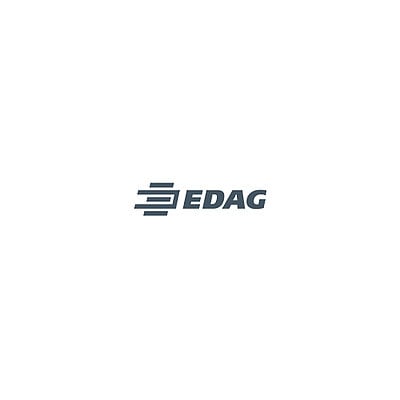What if selling a product didn't mark the end, but rather the beginning of new revenue streams? What if every use, every service, and every data point could enable additional revenue models?For many companies, this still sounds like a pipe dream. But the forces driving this development have long been felt: innovation cycles are shortening, supply chains remain fragile, and markets are changing at a rapid pace. At the same time, customers and partners have increasingly high expectations for sustainability, transparency, and efficiency. Companies are therefore faced with the challenge of not only complying with regulatory obligations, but also tapping into new sources of revenue and securing their long-term growth.
The key question is therefore: How can innovation, responsibility, and profitability be combined while also increasing the pace required for new business models? The answer lies in a reusable, interoperable data and system base that creates transparency, increases efficiency, and enables data-based revenues throughout the entire life cycle. In reality, however, companies often reach the limits of their own data structures.
Why data starves in silos
The prospect of creating new value with data is tempting. In practice, however, companies repeatedly encounter the same hurdles: information is scattered across departments and systems, formats are inconsistent, and quality varies. IT and OT do not speak the same language.
Added to this is the high cost of integration. Proprietary interfaces and a lack of standards lead to time-consuming manual processes. Especially when it comes to sustainability and reporting, this fragmentation causes delays, rising costs, and a high risk of errors.
Collaboration with partners and platforms also remains a balancing act. Openness is necessary to share data and develop new services. At the same time, control over sensitive information must be maintained. As a result, many initiatives never make it past the pilot stage.
The result: companies sit on huge amounts of data but fail to make it usable in a comprehensive context. This means that valuable opportunities remain untapped.
Smart ecosystems: Turning data into growth
The key lies in no longer viewing data in isolation, but rather connecting it within a common framework and making it usable across company boundaries. This is exactly where EDAG comes in with Smart Ecosystems.

A central data hub bundles information from IT and OT systems. Smart data pipelines harmonize formats and create context, while open interfaces ensure seamless integration. This forms the basis for tools such as analytics and artificial intelligence, which recognize patterns and enable forecasts. Digital twins mirror products, systems, and processes throughout their entire life cycle. Dashboards visualize this data and support decision-making, while apps based on it provide specific functions for the application.
For this architecture to work, it needs clear guiding principles: interoperability for connectivity, data governance for trust and security from the outset. Security by design ensures that sensitive information remains protected – even in open partner networks. EDAG consistently focuses on tailor-made solutions instead of one size fits all.
The result is a robust foundation that reduces integration effort, meets regulatory requirements more quickly, and gives companies the freedom to drive innovation and develop new business models.
Battery Passport 2.0: Regulation as a growth driver
The digital battery passport shows how the smart ecosystem approach works in practice. The new EU regulations require, for the first time, that tamper-proof data be made available throughout the entire life cycle of a battery. Each battery is assigned a digital twin and a product passport that bundles all relevant information: production and quality data, material origin, maintenance history, CO₂ balances, and recycling feedback.
These data flow through smart data pipelines into a central hub, where they are available consistently, securely, and at any time. On this basis, regulation becomes the starting point for innovation. Compliance reports can be generated automatically. At the same time, new services are emerging, such as service life forecasts, second-life assessments, and AI-supported anomaly detection with automated service workflows. Business models such as pay-per-use, performance contracts, and battery-as-a-service are becoming possible because the seamlessly documented data history creates trust and is secured by tamper-proof technologies such as blockchain.
Another advantage is open integration: partners and users of the data can be seamlessly connected in data ecosystems , while data sovereignty remains with the manufacturer. This makes it clear that the battery passport not only serves to fulfill obligations, but also acts as a catalyst to reveal the potential of smart ecosystems—and transfer it to new industries and business areas.
Smart ecosystems in action: New markets are emerging
The battery passport is an example of how regulation can trigger new data flows and business models. But the potential of smart ecosystems goes far beyond that. Examples illustrate how new markets are emerging:
- Supply chains: Predictive supply approaches identify bottlenecks early on and dynamically control networks. Companies gain flexibility and increase their resilience.
- Manufacturing: Machines and equipment no longer have to be sold, but can be billed based on usage. Manufacturers tap into continuous revenue streams, while customers lower investment barriers.
- Transparency: Digital twins of the supply chain make dependencies visible, allow for flexible rescheduling, and shorten delivery times. In addition, AI-supported spare parts forecasts reduce storage costs and downtime.
- Energy and resource sharing: Platforms can be used to share surplus energy, waste heat, or material flows across industries—generating new revenue, CO₂ credits, and faster amortization.
- Asset tracking: Containers or machines with IoT and blockchain IDs can be tracked transparently, accelerating circulation and converting them into subscription models.

The common denominator: intelligently networking data means efficiency gains and, at the same time, opens up access to completely new business models, regardless of industry or product.
From vision to implementation with EDAG
As great as the opportunities offered by smart ecosystems are, their implementation is just as challenging. EDAG supports companies from the initial idea to a scalable data ecosystem, turning concepts into concrete value creation. This is made possible by the unique combination of industrial and manufacturing know-how, software and AI expertise, and a strong partner network. This combination makes EDAG an end-to-end partner that not only designs smart ecosystems, but also successfully puts them into practice.
The first step is a vision workshop with all relevant stakeholders. Here, goals and pain points are identified. Building on this, a data and interface assessment provides the necessary transparency to identify initial quick wins with a business case.

These results are used to create a roadmap that ranges from analysis to implementation and operation. Standardized workflows, governance models, and proven project management ensure smooth implementation.
The combination of competencies is crucial here: EDAG links IT and OT, integrates security mechanisms from the outset, and creates the basis for seamless collaboration with partners and platforms. On request, EDAG also takes care of operation and scaling. In this way, we ensure that smart ecosystems not only emerge, but also grow successfully in the long term and create real added value.
Business value and outlook
Smart ecosystems unfold their value on several levels. They facilitate compliance with regulatory requirements, increase efficiency and availability, open up new revenue models, promote sustainability, and secure important competitive advantages for companies. Examples of this include:
- Compliance by design: Mandatory requirements can be implemented with significantly less effort.
- Efficiency and availability: Predictive maintenance and quality increase productivity and decision-making confidence.
- New revenue models: Data-based services and subscriptions generate continuous income – for example, via industrial web shops, digital configurators, or connections to global marketplaces.
- Sustainability: Transparency in emissions, second-life approaches, and recycling strengthen the circular economy.
- Competitive advantage: Companies respond more quickly to market changes and secure opportunities at an early stage.
However, this potential does not unfold all at once, but step by step. The journey rarely begins with a comprehensive overall project, but rather with a clear entry point that provides orientation and enables quick successes. In this way, individual use cases grow into a scalable, open data ecosystem.
With EDAG as your partner, you can create a solution that goes beyond pure technology and paves the way to new markets and business models.
Your next step: Start with a Vision Workshop, where we will work together to identify goals, potential, and quick wins.
If you would like to learn more about smart ecosystems, please contact Jana Speidel, Senior Expert Digitalization Smart Factory. Or download our Couchtalk on “Smart Ecosystems – Increasing Productivity and Flexibility through Networked Platforms and Data Management” here!
And if you would like to discuss these topics live, visit us at the Smart Industry Summit (SIS).






